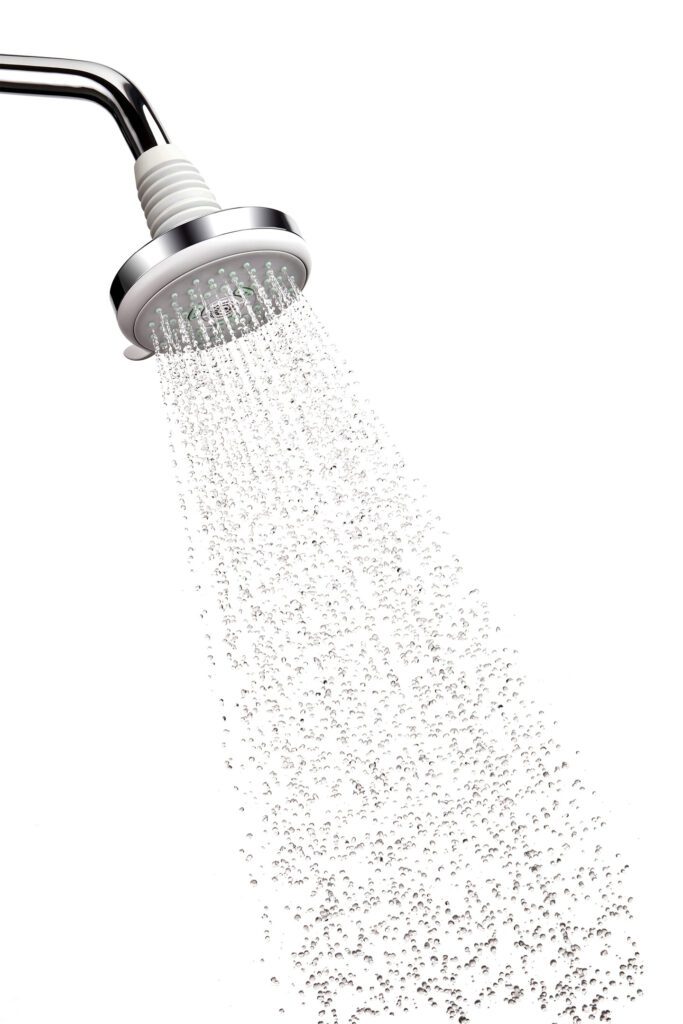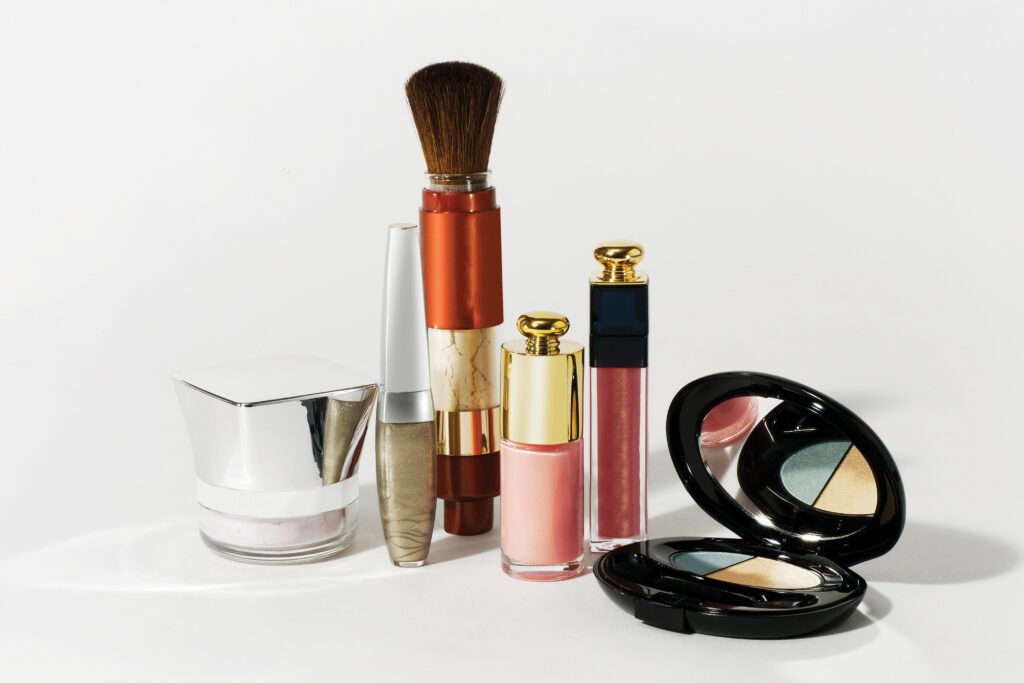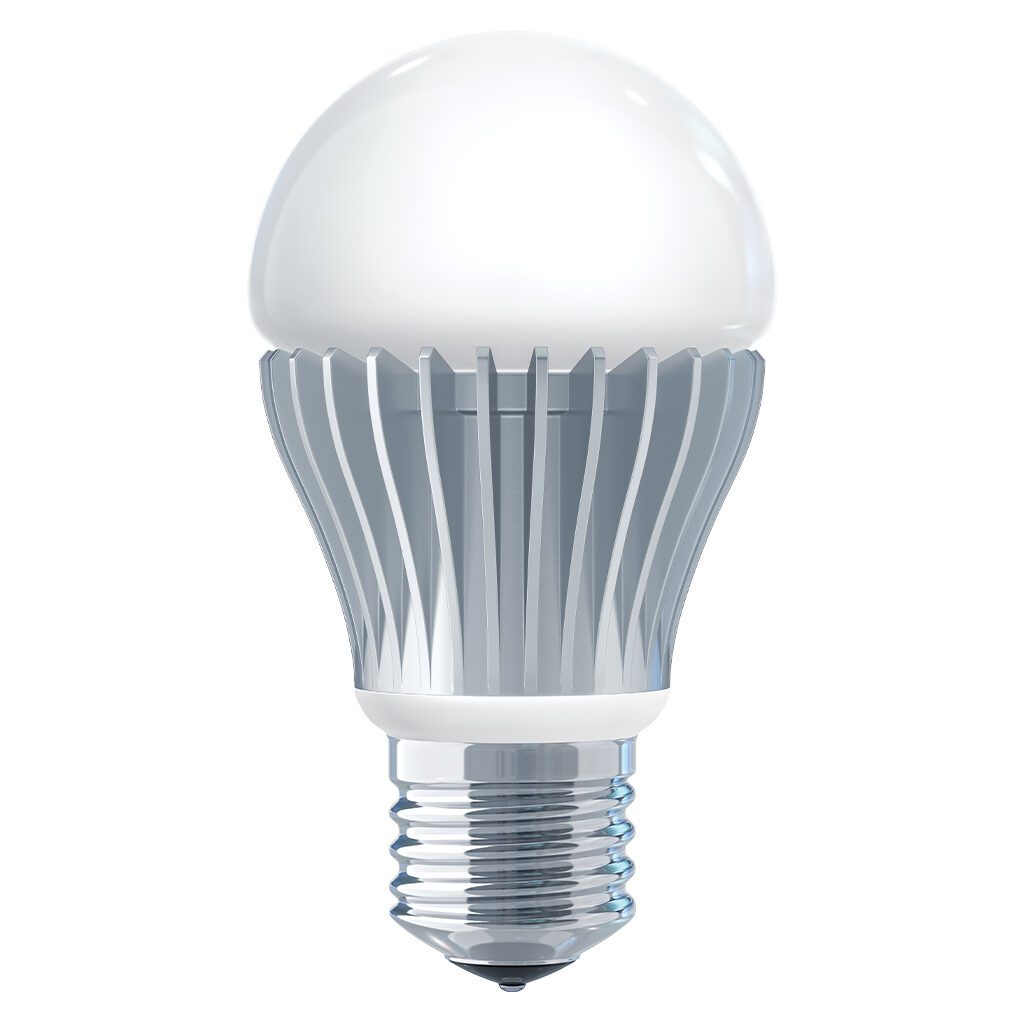For Him
How Often You Really Need a Shower

More than likely, your daily routine includes a good scrub down (or two) in the shower – you’ve been conditioned to believe that washing your body daily is essential for cleanliness and good health! But what if a daily shower wasn’t the necessity you once thought?
Turns out, taking too many showers can rob your skin of natural, essential oils that protect the skin cells. Frequent showering, particularly hot showers, can also lead to dry skin that’s red and itchy and form cracks that create a higher risk for infection.
With this in mind, many doctors now recommend showering every two to three days.
Of course, this blanket recommendation doesn’t account for factors such as climate, work conditions, and exercise. Generally, men who perspire throughout the day, whether at a labor-intensive job or at the gym, will want a daily shower to rid the body of excess oils and environmental contaminants. Skipping that shower can result in clogged pores, acne, and unpleasant odors.
The bottom line: If you lead a sedentary lifestyle, try going a day or two without showering – especially during winter when the air is dry and cold. When you’re ready for a rinse, limit time spent in the shower as much as possible, and use a lukewarm water temperature.
Reigning in the Road Rage
Cut someone off in traffic lately?
According to the American Automobile Association, millions of Americans engage in road rage annually, with men ages 19 to 39 being the biggest culprits. Described as uncontrolled anger that leads to aggressive, violent driving, road rage includes purposefully tailgating, honking or making obscene gestures, and yelling at other motorists.
On a more dangerous level, road rage can result in running another car off the road or colliding with another vehicle – which can cause personal injury and have legal or financial consequences. Whether road rage is a daily concern, or just an occasional occurrence, you can help keep your emotions in check with a few preventative measures:
- Get plenty of rest before getting behind the wheel.
- Plan to leave early for your destinations.
- Listen to soothing music on your drive.
- Practice simple relaxation
techniques, like deep breathing.
When you encounter another driver who might be experiencing road rage, do not respond. Give the other driver room on the road, and avoid eye contact. If the driver persists, putting you and other motorists in danger, call or drive to the nearest police station for help.
For the Whole Family
Decoding Expiration Dates
While your vigilance toward checking the dates on food (and promptly ridding your household of anything past date) seems admirable, you may just be tossing money in the trash.
Ask yourself: By strictly adhering to the date on the package, are you throwing away a perfectly good loaf of bread? What about that gallon of milk that smells fine, but expired two days ago?
Check out our short and sweet expiration date guide, and think again before tossing.
“Sell by” Food is safe to eat up until this date, with grocers often discounting the product as the “sell by” date approaches. Once a “sell by” date has passed, try to eat refrigerated goods within two days or store products in the freezer for up to three months.
“Use by” Printed for the benefit of the consumer, “use by” and “best if used by” are meant to assure consistent food quality, or peak freshness. These guidelines are relatively loose, as many products will last longer depending on their storage and handling. If stored at the correct temperature, milk can last a week past its printed “use by” date, whereas eggs will last at least four or five weeks after their pack date. Find the three-digit number stamped on the carton, known as the Julian date, to determine the pack date (001 is January 1, and 365 is December 31).


“Freeze by” If a food is labeled “use or freeze by,” then it can be stored in the freezer for a duration of time after the date. This label is especially common for meat, which can remain in the freezer anywhere from a few months to an entire year.
“Expiration” This actually means what it says. If you haven’t used the product by this date, toss it.
Family Fitness 101
Active children are more likely to turn into active adults. And what better way to ensure that your children are getting their daily hour of activity than by participating with them? Commit to working on fitness together this spring, and you’ll reap the rewards of more family time and more muscle mass – definitely a win/win!
Make It Fun. Exercise doesn’t have to be boring or even structured! Think outside of the box and hold jumping jack competitions during TV commercial breaks, make your own family workout video, or build a ninja course in the backyard. Incorporate music for some extra fun, but don’t be surprised when a dance party ensues.
Establish a Routine. Between work schedules, piano lessons, and homework, finding time to exercise as a family can seem like an impossible task. Start by setting aside 30 minutes for physical activity three days a week, whether right after school or after dinner. Take advantage of the weekends to plan out a more involved activity, like a family hike or a canoe trip.
Set Goals. For some extra motivation, create goals that you can work toward as a family. For younger children, keep track of their personal records, such as the number of sit-ups completed in one minute; aim to increase that number each week. Encourage your older children to train for a 5K race with you.
For New Moms
What’s in Your Prenatal Vitamins?


Maintaining a healthy diet of vegetables, fruits, grains, lean protein, and dairy is one of the best ways to care for your unborn baby. But for many soon-to-be mothers, consuming the necessary nutrients can be challenging. Enter prenatal vitamins: a combination of folic acid, iron, calcium, and additional vitamins and minerals that fills in the nutritional gaps, supporting the development of your baby.
Here, we’ll look at three major components of prenatal vitamins and how they benefit you and your baby:
Folic acid – Getting enough folic acid is essential in the first month of pregnancy, which is why this vitamin is often prescribed to women trying to conceive. Folic acid decreases the chances of neural tube defects, potentially affecting the baby’s brain and spinal cord. Pregnancy complications may also lessen by taking folic acid.
Iron – Due to an increase in blood supply in the body, pregnant women need nearly twice as much iron as they required prior to pregnancy. This extra iron helps to prevent anemia, as well as reduces the risk of an early birth or a low birth weight.
Calcium – This mineral helps the fetus build healthy bones and teeth, while also keeping the mother’s bones strong. Calcium is needed for the normal development of a baby’s heart rhythm, and it has been linked to a lower risk of preeclampsia.
The Co-Sleeping Conundrum
You’ve placed your newborn baby in their crib for the night, and five minutes later, the crying begins. After much soothing and frustration, you finally relent – and your baby comes to bed with you. Co-sleeping has persisted as a prevalent practice through the years, but the question remains: Is it safe for your baby?
According to the American Academy of Pediatrics, the risks of co-sleeping outweigh the benefits. Sharing a bed with your baby can potentially lead to strangulation, suffocation, or SIDS, particularly in infants less than four months old. However, mothers who prefer to co-sleep should choose a firm mattress and remove pillows, blankets, or any loose items from the baby’s sleep area.
As an alternative, the experts at the AAP recommend that babies sleep in the same room as their parents, just in their own crib or bassinet. Called room sharing, this practice is ideal for the first six months, and up to the first year of your baby’s life. Room sharing is convenient for breastfeeding in the night and conducive to bonding; room sharing also reportedly decreases the risk of SIDS up to 50%.
For Her
Time for a Make-Up Call
If you’re still hanging on to that perfect shade of lipstick from years ago, or you’ve been adding water to your mascara tube to make it last longer, it’s time for a make-up call. Not only can expired cosmetics cause redness and bumps on the skin, but they can also lead to blisters and swelling. Products that contain water, like liquid eyeliner, are more susceptible to bacteria growth – which can cause more serious eye infections.
First, it’s important to educate yourself on the basics of cosmetic care.
Eye makeup typically has the shortest shelf life, with mascara and liquid eyeliner lasting only three months.


Other products range from one to two years, with powders being one of the longest-lasting cosmetics. Cleaning makeup brushes regularly can help keep bacteria and germs at bay.
When a product doesn’t specify an expiration date, keep track of when you open and begin using the product – then follow the recommended guidelines. Not sure if your makeup is ready to be tossed? Pay attention to unpleasant smells and changes in consistency or color. Clumpy lip gloss, dried-up mascara, and powder that begins caking are signs that lead straight to the trash.
Smile!
Benefits of Flashing Your Pearly Whites
Mother Teresa once said, “We shall never know all the good that a simple smile can do.” And while we can’t know everything, we can say with confidence that there are tons of benefits to smiling. Here are a few reasons to grin and bear it:
Smiling reduces stress. You know that stress has a negative effect on the body, as it’s linked to heart disease, high blood pressure, and obesity. Smiling is a natural stress-reducer, so try it out the next time you’re tense or worried!
Smiling boosts immunity. Smiling causes your body to relax, which allows your immune system to function optimally. Some studies suggest that smiling increases the production of white blood cells, contributing to a stronger immune system overall.
Smiling releases endorphins. Those feel-good chemicals you associate with exercise? You also release them every time you smile – resulting in a happier you.
Smiling makes you more productive. If you’re feeling unmotivated at the office, a smile might just be the answer. Make that conscious effort at positivity, and you’ll find the energy to take on the task at hand.
For Moms
Pass the Veggies, Please!


No matter how you plate it, some children just won’t get on board with carrots, spinach, or broccoli. They’ll gag at the sight of squash, or throw a tantrum when asked to finish their peas. What’s a mom to do, especially knowing that your little ones need anywhere from 1 to 3 cups of vegetables per day?
Try the following tips on “sneaking” veggies into the family meal, and watch your child gobble up the good stuff! Remember to reveal when you’ve included extra vegetables – the goal is for your child to realize that greens and beans can be tasty and enjoyable.
- Purée veggies to go in pasta sauce or soups. Carrots, zucchini, and squash are perfectly subtle additions that pack an extra nutritional punch.
- Throw a handful or two of spinach into fruit smoothies. Blend milk, vanilla Greek yogurt, peanut butter, banana, and spinach for a naturally sweet, delicious smoothie!
- Add chopped mushrooms to beef mixtures. With their meaty texture, mushrooms can be easily disguised in taco meat or Sloppy Joes.
- Blend steamed cauliflower into mashed potatoes. Or, if you’re feeling brave, omit the potatoes altogether for a tasty cauliflower mash – a great source of vitamin C.
- Include veggies in baked goods. Healthy treats like zucchini bread, carrot muffins, and pumpkin brownies are sure to satisfy your child’s sweet tooth.
Wart Watch
Touched any frogs lately? Contrary to popular belief, amphibians aren’t the cause of your child’s warts – instead, these skin growths are the result of the human papillomavirus, or HPV. Although contagious, warts are virtually harmless and quite common. Between 10-20% of children develop skin warts.
If a wart or two has appeared on your child’s hand, there’s no need to panic. In fact, it’s okay to do nothing at all! Some children, whether due to embarrassment or discomfort, might want the wart(s) removed; if that’s the case, you have several treatment options to choose from.
Home remedies. The application of vitamin C paste, apple cider vinegar, or castor oil to the wart are common home remedies. Some experts recommend covering the wart with duct tape for up to a week; after removing the tape, soak the wart in water and then debride the wart with a pumice stone or emery board.
Drugstore wart removers. These medications can come in the form of pads, gels, and ointments, and most contain salicylic acid. Freezing liquid wart removers are also available, although this method should never be used on your child’s lips or face.
Visiting a dermatologist. In more severe cases, seeing a dermatologist may be the best course of action. Standard practices include freezing the wart with liquid nitrogen or burning the growth with a laser. Your doctor may also prescribe or apply medicine to boost your child’s immune system.
Keep in mind that a wart rarely goes away on the first treatment. It’s not unusual for it to take several weeks to months of treatment. Persistence is key!
For the Home
The Better Bulb: CFL vs. LED Lighting
For decades, American consumers had just one lighting option at their local hardware store: incandescent light bulbs. But this traditional bulb has been slowly phased out over recent years, making way for the rise of more energy-efficient CFLs and LEDs. As lighting accounts for roughly one-quarter of your home’s electric bill, you need to know watt’s up with these two options.
CFLs – Compact Fluorescent Lights
The Good: CFLs use about 70% less energy than their incandescent counterparts. The emitted light appears much like the incandescent light that consumers recognize, and it spreads very evenly throughout a room.
The Bad: CFLs contain mercury in the bulb; while harmless when the bulb is intact, a broken CFL requires proper cleanup and disposal, which can be a hassle. CFLs also take time to reach their full brightness and are known to have a sensitivity to cold temperatures.


LEDs – Light-Emitting Diodes
The Good: LEDs boast the longest lifespan of any bulb on the market – ranging anywhere from 20,000 to 50,000 hours. They require less energy to use than CFLs and are more durable, and unlike CFLs, they do not contain mercury. LEDs also have no sensitivity to external temperatures.
The Bad: While the price has dropped dramatically in the last few years, LEDs are still more costly than other bulbs. Additionally, as LEDs are a more harsh, directional light source (meaning they emit light in a specific direction), the light does not spread as evenly as that of CFLs.
When choosing lighting for your home, try a combination of CFL and LED bulbs to find your preference. LED bulbs tend to be used as task lighting, including tasks such as reading, cooking, or working from home, while CFLs work well for general home lighting, or illuminating an entire room.
Picking the Best Air Filter for Your Home
The filter in your home’s Heating Ventilation and Cooling (HVAC) system right now – can you picture it? Do you remember what kind of filter you brought home from the store, or the last time you changed it? For most of us, the answer is probably not … but you should. The type of air filter you purchase, and how often you change it, can have a huge impact on your health, your family’s health, and your home’s health.
Air filters are the physical barriers between your respiratory system and pollutants such as dust, dander, pollen, fungus, mold, mildew, viruses, spores, odors, dirt, mites, and chemicals. They also protect your heating and cooling system from clogs and premature deterioration. When choosing your next air filter, you may want to consider a couple of factors:
- The filter’s MERV rating – MERV, or Minimum Efficiency Reporting Value, tells consumers how effective the filtration is. The lower the MERV, the more often a filter should be replaced.
- Type of filter – Fiberglass, Pleated, High Efficiency, or HEPA
Fiberglass – Fiberglass filters will need to be changed more often. They remove less than 10% of your home’s pollutants.
Pleated – Pleated filters remove around 45% of pollutants with an average MERV rating between 10 and 13.
High Efficiency – High-efficiency filters remove nearly 85% of pollutants and have a MERV rating around 14 to 16.
HEPA – Although HEPA filters usually won’t fit a typical HVAC system, they catch nearly 98% of pollutants with a MERV rating of 17 to 20.

